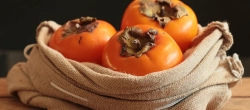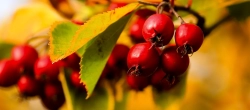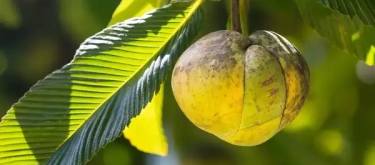Bird cherry (Prunus padus): Taste Profile, Aroma, Benefits and Health Risks
Bird cherry (Prunus padus), a member of the Rosaceae family, is a small black fruit known for its astringent and slightly bitter taste. Native to Europe, Asia, and North America, it is valued for its use in traditional cuisine and herbal remedies. In Eastern European countries, particularly Russia, bird cherry is commonly used to flavor baked goods, ground into flour, or infused into beverages.
What does Bird cherry (Prunus padus) taste like?

Primary Flavor Characteristics
Bird cherry has a distinctive astringent and slightly bitter taste with a hint of sweetness. Its flavor is often compared to a mix of cherries and prunes but with a dry, tannic quality that sets it apart.
Aromatic and Taste Nuances
The aroma of bird cherry is rich and woody, with notes of almond and spice. When cooked or processed, its flavor mellows, revealing a subtle sweetness and enhancing its aromatic qualities.
Scientific Description of Taste and Aroma
- Aroma: Woody, nutty, with almond-like and spicy notes.
- Taste: Astringent, mildly bitter, with hints of cherries, prunes, and a touch of sweetness.
- Texture: Smooth and juicy when fresh, with a slightly grainy texture when ground into flour.
In-Depth Flavor Analysis of Bird Cherry
Underlying Flavor Notes
- Astringency: The most prominent feature, resulting from its high tannin content.
- Subtle Sweetness: A light sweetness balances the bitterness, especially after cooking.
- Nutty Undertones: Hints of almond give bird cherry a unique depth.
- Woody Characteristics: A warm, earthy aroma enhances its rustic appeal.
Impact of Processing on Flavor
- Fresh Fruit: Intense astringency and mild sweetness.
- Dried or Ground: A more balanced, milder flavor with enhanced nuttiness and earthy notes.
- Cooked: Reduced astringency, with the sweetness and almond notes becoming more pronounced.
Textural Qualities
Fresh bird cherries are juicy but small, with large seeds. When ground into flour, they have a slightly gritty texture, ideal for dense baked goods.
Culinary Uses of Bird Cherry
Primary Uses
- Baking: Bird cherry flour is a traditional ingredient in cakes, pies, and bread, imparting a nutty and aromatic flavor.
- Desserts: Used in fillings for pastries, tarts, and syrups for its unique flavor and aroma.
- Beverages: Bird cherry infusions are popular in teas and traditional liqueurs.
- Herbal Remedies: Incorporated into decoctions and tinctures for its potential health benefits.
- Flavoring: Adds complexity to jams, jellies, and sauces when combined with other fruits.
Ideal Pairings for Bird Cherry
- Fruits: Pairs well with apples, pears, and prunes to balance its astringency.
- Nuts: Almonds and walnuts complement its nutty undertones.
- Chocolate: Dark chocolate enhances bird cherry’s earthy and woody flavors.
- Spices: Cinnamon, cloves, and nutmeg add warmth to bird cherry-based dishes.
- Dairy: Cream and ricotta soften its intensity and balance the flavor in desserts.
Health Benefits of Bird Cherry
Key Nutrients and Benefits
- Rich in Antioxidants: Bird cherry contains high levels of polyphenols and tannins, which help reduce oxidative stress.
- Digestive Aid: Its tannins have astringent properties that may soothe digestive discomfort.
- Anti-Inflammatory Properties: Traditional use suggests it may help reduce inflammation.
- Immune Support: Contains vitamin C and other compounds that support immune health.
- Potential Antibacterial Effects: Bird cherry has been used in folk medicine for its antibacterial properties.
Potential Precautions
- Astringency: Consuming large amounts of raw bird cherries may cause dryness in the mouth due to their tannin content.
- Seed Toxicity: The seeds contain compounds that can release cyanide when crushed, so avoid consuming them.

Tips for Choosing and Storing Bird Cherry
How to Choose Quality Bird Cherry
- Fresh Fruit: Look for plump, dark berries without blemishes or signs of spoilage.
- Flour: High-quality bird cherry flour should have a uniform texture and a nutty aroma.
- Dried Berries: Ensure they are free from added sugars or preservatives.
Storage Recommendations
- Fresh Berries: Store in the refrigerator and consume within a few days.
- Dried Berries or Flour: Keep in an airtight container in a cool, dark place to maintain freshness.
Fun Facts About Bird Cherry
- Historical Use: Bird cherry has been used for centuries in traditional Slavic and Siberian cuisines.
- Cultural Significance: In Russia, bird cherry is associated with rustic, homemade desserts and herbal remedies.
- Rare Ingredient: Bird cherry flour is considered a specialty product due to the meticulous process of grinding the fruit and removing the seeds.











